Complete Solutions to Level 1 Subjective of chapter SIMPLE HARMONIC MOTION of Class 11 book with complete answers and questions
| Class 11 | PHYSICS |
| Chapter | SIMPLE HARMONIC MOTION |
| DC PANDEY | Level 1 Subjective |
| Number Of Questions | 39 |
| Academic Year | 2023-24 |
Find the period of oscillation of the system shown in figure.
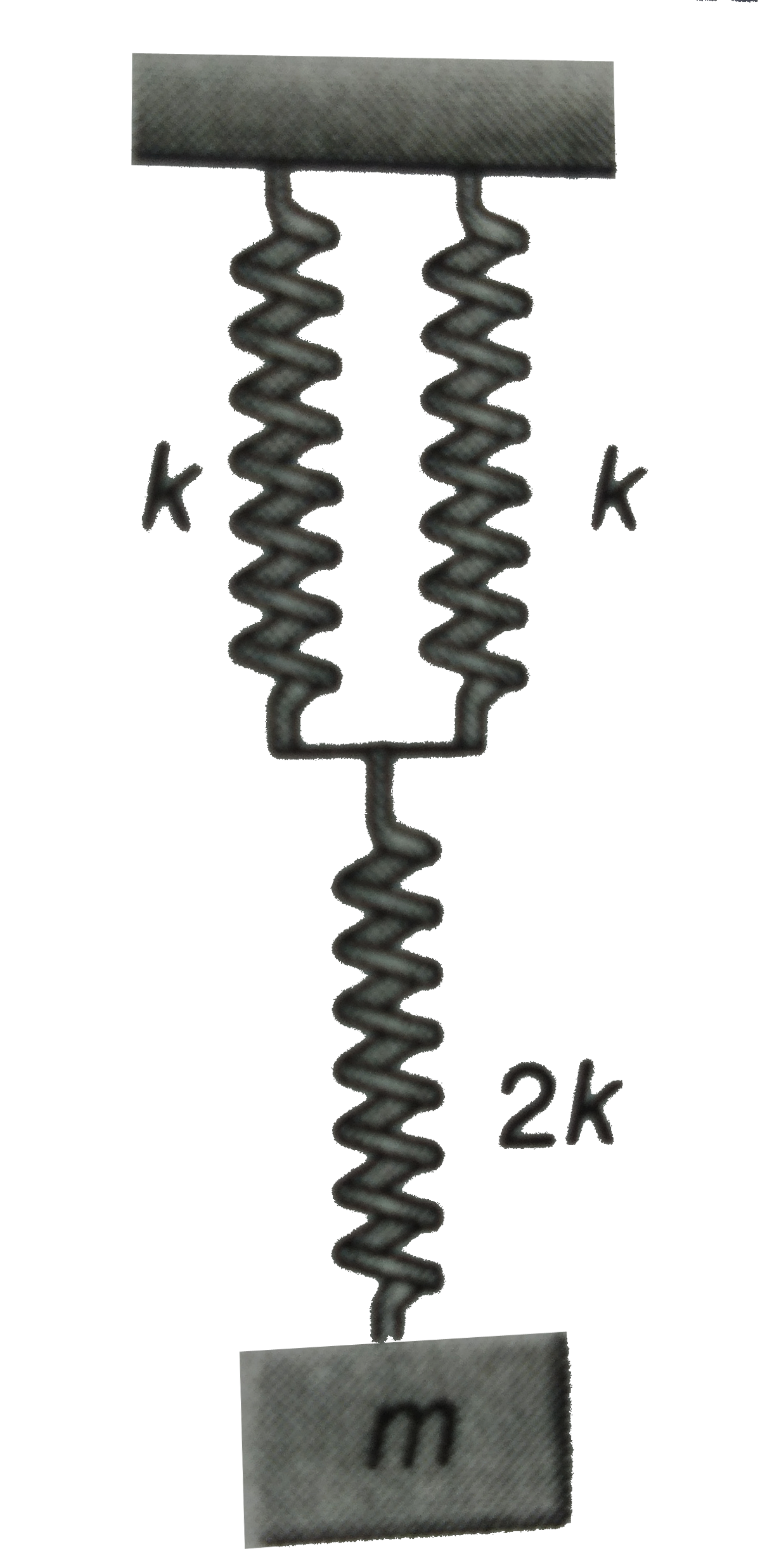
View SolutionA block of mass 0.2 kg is attached to a mass less spring of force constant 80 N/m as shown in figure. Find the period of oscillation. Take `g=10 m//s^(2)`. Neglect friction
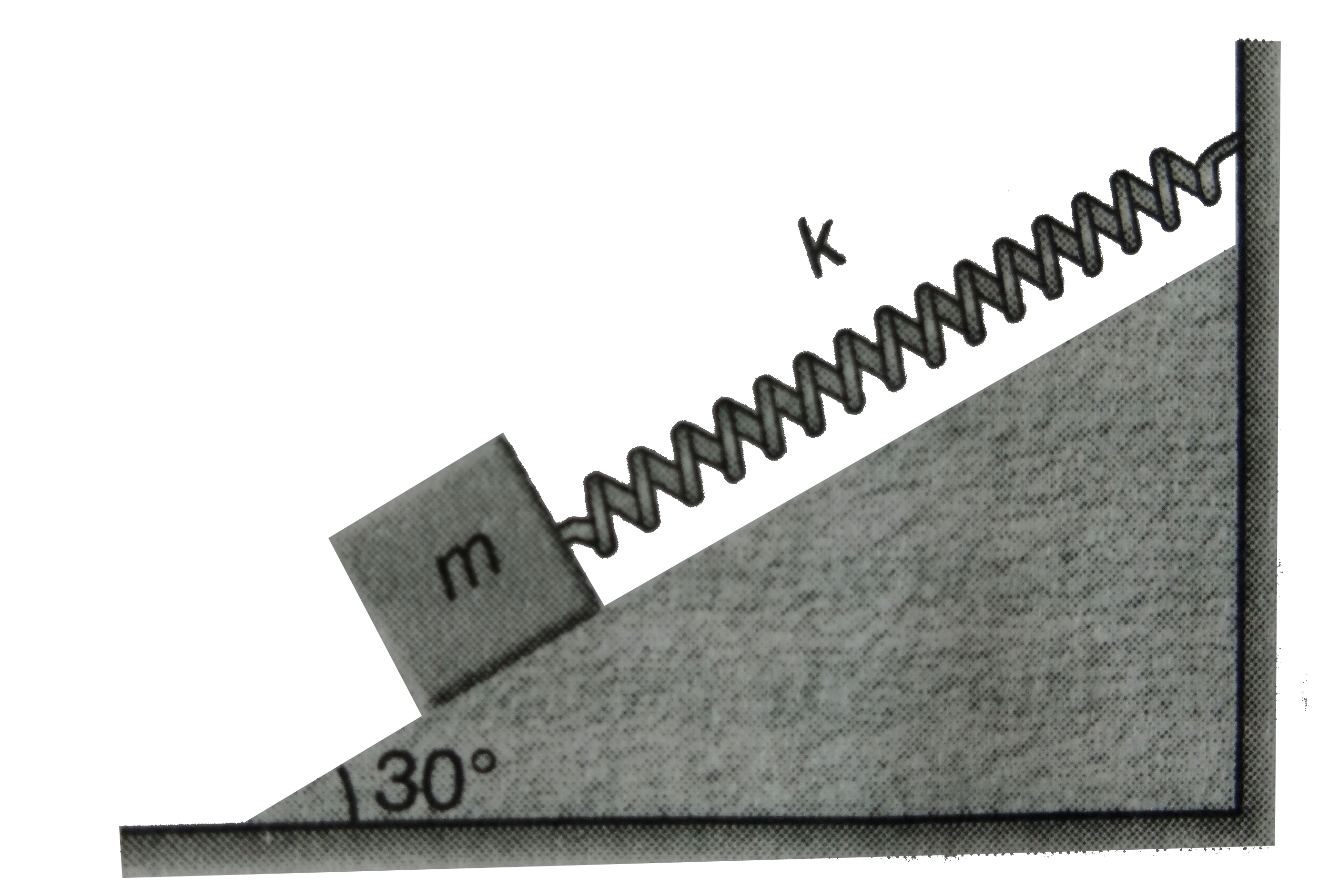
View SolutionA body of weight `27N` hangs on a long spring of such stiffness that an extra force of `9 N` stretches the spring by `0.05m`. If the body is pulled downward and released, what is the period ?
View SolutionA clock with an iron pendulum keeps correct time at `20^(@)C`. How much time will it lose or gain in a day if the temperature changes to `40^(@)C`. Thermal coefficient of liner expansion `alpha = 0.000012 per^(@)C`.
View SolutionA `50 g` mass hangs at the end of a massless spring. When `20 g` more are added to the end of the spring, it stretches `7.0 cm` more. (a) Find the spring constant. (b) If the `20 g` are now removed, what will be the period of the motion ?
View SolutionAn object suspended from a spring exhibits oscillations of period `T`. Now ,the spring is cut in half and the two halves are used to support the same object, as shown in figure. The new period of oscillation is .
 .
.
View SolutionThe string, spring and the pulley shown in figure are light. Find the time period of the mass `m`.
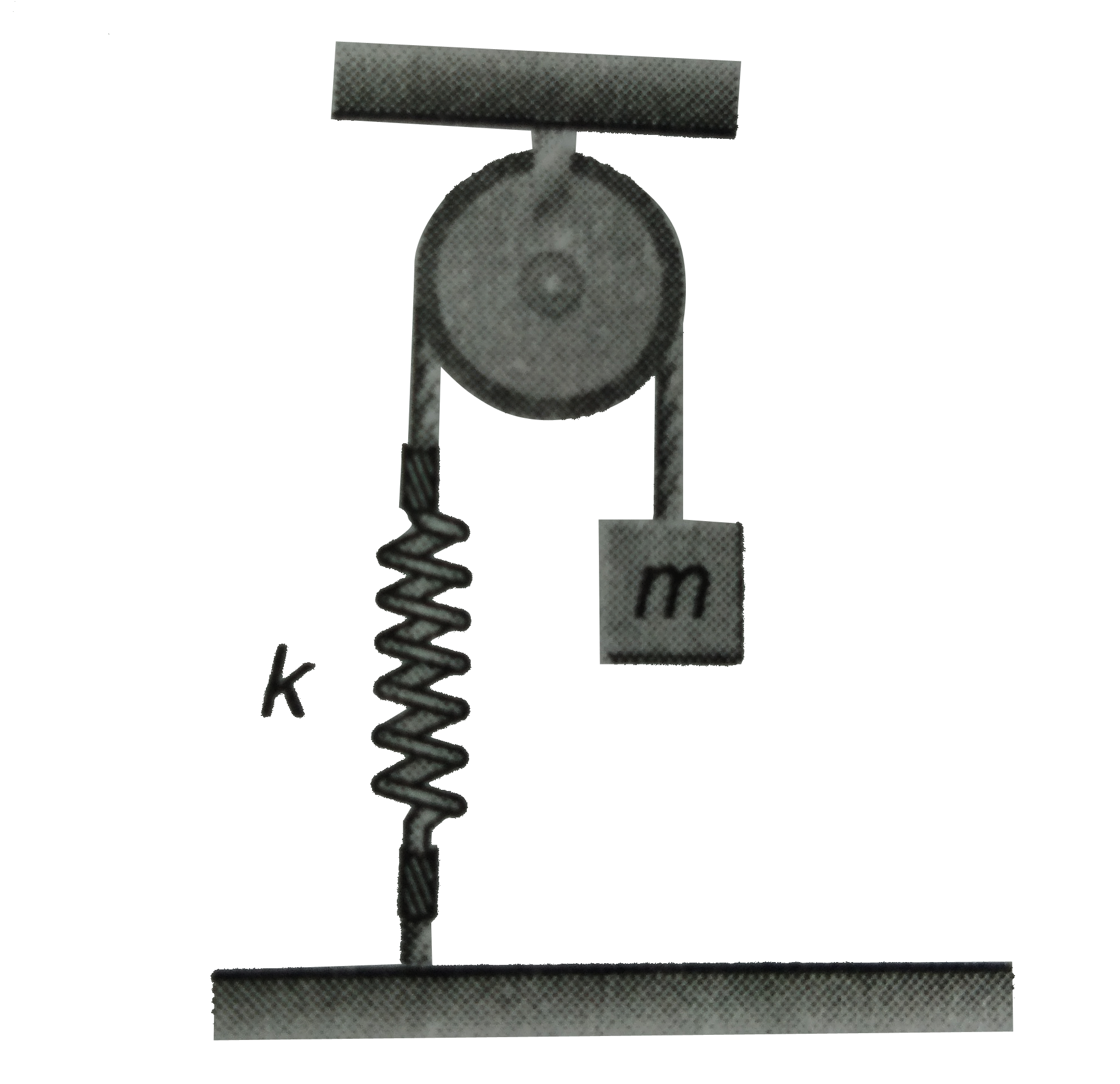
View SolutionA simple pendulum with a solid metal bob has a period `T`. What will be the period of the same pendulum if it is made to oscillate in a non - viscous liquid of density one - tenth of the of the metal of the bob ?
View SolutionA particle moves under the force `F(x) = (x^(2) - 6x)N`, where `x` is in metres. For small displacements from the origin what is the force constant in the simple harmonic motion approximation ?
View SolutionThe initial position and velocity of a body moving in SHM with period `T = 0.25s` are `x = 5.0cm` and `v = 218cm//s`. What are the amplitude and phase constant of the motion ?
View SolutionA point particle if mass `0.1 kg` is executing SHM of amplitude `0.1 m`. When the particle passes through the mean position, its kinetic energy is `8 xx 10^(-3)J`. Write down the equation of motion of this particle when the initial phase of oscillation is `45^(@)`.
View SolutionPotential energy of a particle in SHM along x - axis is gives by
`U = 10 + (x - 2)^(2)`
Here, `U` is in joule and `x` in metre. Total mechanical energy of the particle is `26 J`. Mass of the particle is `2kg`. Find
(a) angular frequency of SHM,
(b) potential energy and kinetic energy at mean position and extreme position,
(c ) amplitude of oscillation,
(d) x - coordinates between which particle oscillates.
View SolutionA simple pendulum is taken at a place where its separation from the earth's surface is equal to the radius of the earth. Calculate the time period of small oscillation if the length of the string is `1.0m`. Take `g = pi^(2) m//s^(2)` at the surface of the earth.
View SolutionA solid cylinder of mass `M = 10kg` and cross - sectional area `A = 20cm^(2)` is suspended by a spring of force contant `k = 100 N//m` and hangs partically immersed in water. Calculate the period of small oscillation of the cylinder.
View SolutionA simple pendulum of length `l` and mass `m` is suspended in a car that is moving with constant speed `v` around a circle of radius `r`. Find the period of oscillation and equilibrium position of the pendulum.
View SolutionA body of mass `0.10kg` is attached to vertical massless spring with force constant `4.0 xx 10^(3)N//m`. The body is displaced `10.0cm` from its equilibrium position and released. How much time elapses as the body moves from a point `8.0 cm` on one side of the equilibrium position to a point `6.0cm` on the same side of the equilibrium position ?
View SolutionA body of mass `200 g` is in equibrium at `x = 0` under the influence of a force `F(x) = (- 100x + 10x^(2))N`.
(a) If the body is displacement a small distance from equilibrium, what is the period of its oscillations ?
(b) If the amplitude is `4.0 cm`, by how much do we eror in assuming that `F(x) = - kx` at the end points of the motion.
View SolutionA ring of radius `r` is suspended from a point on its circumference. Determine its angular frequency of small oscillations.
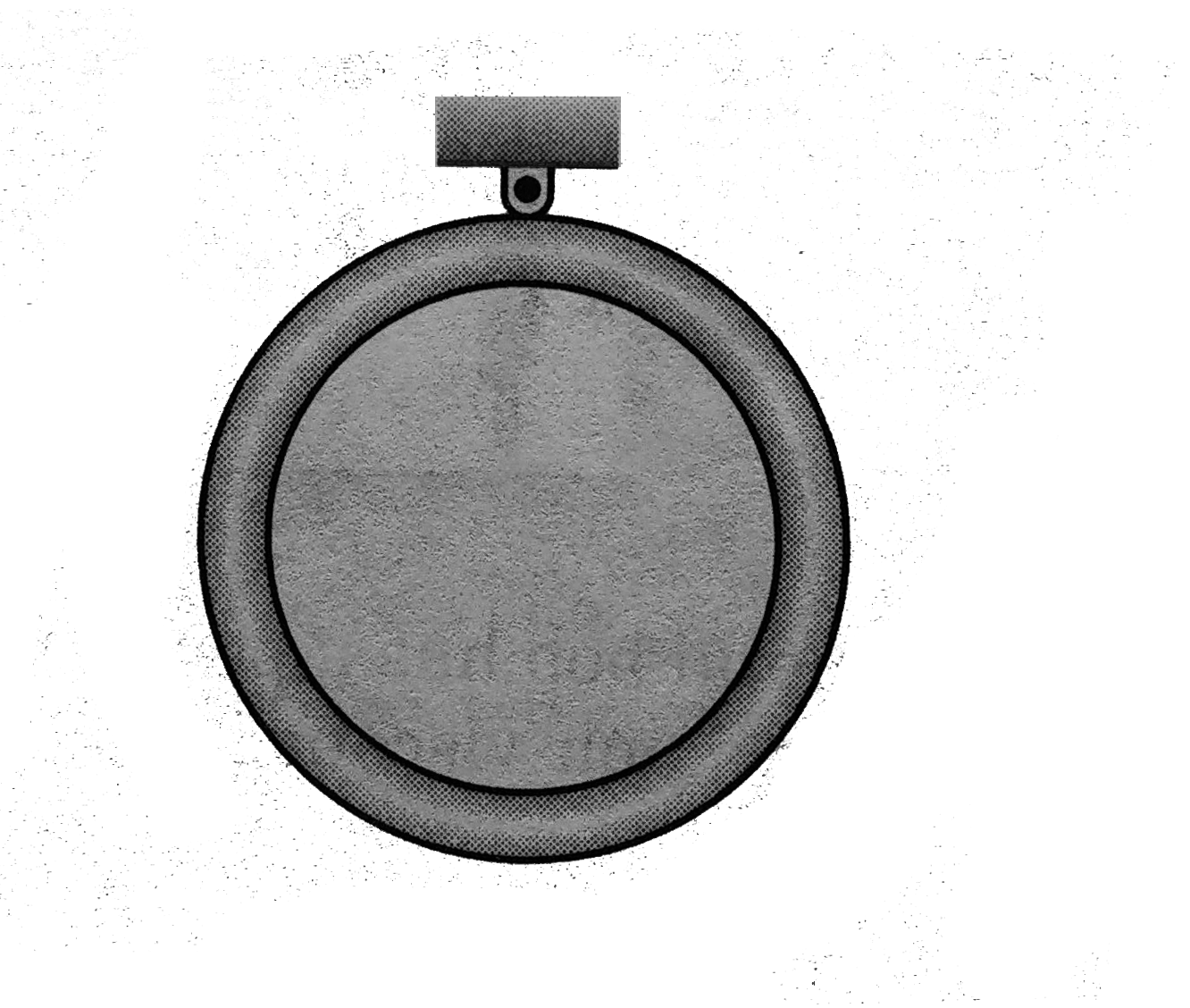
View SolutionA spring mass system is hanging from the celling of an elevator in equilibrium. The elevator suddenly starts accelerating upwards with acceleration a. Find
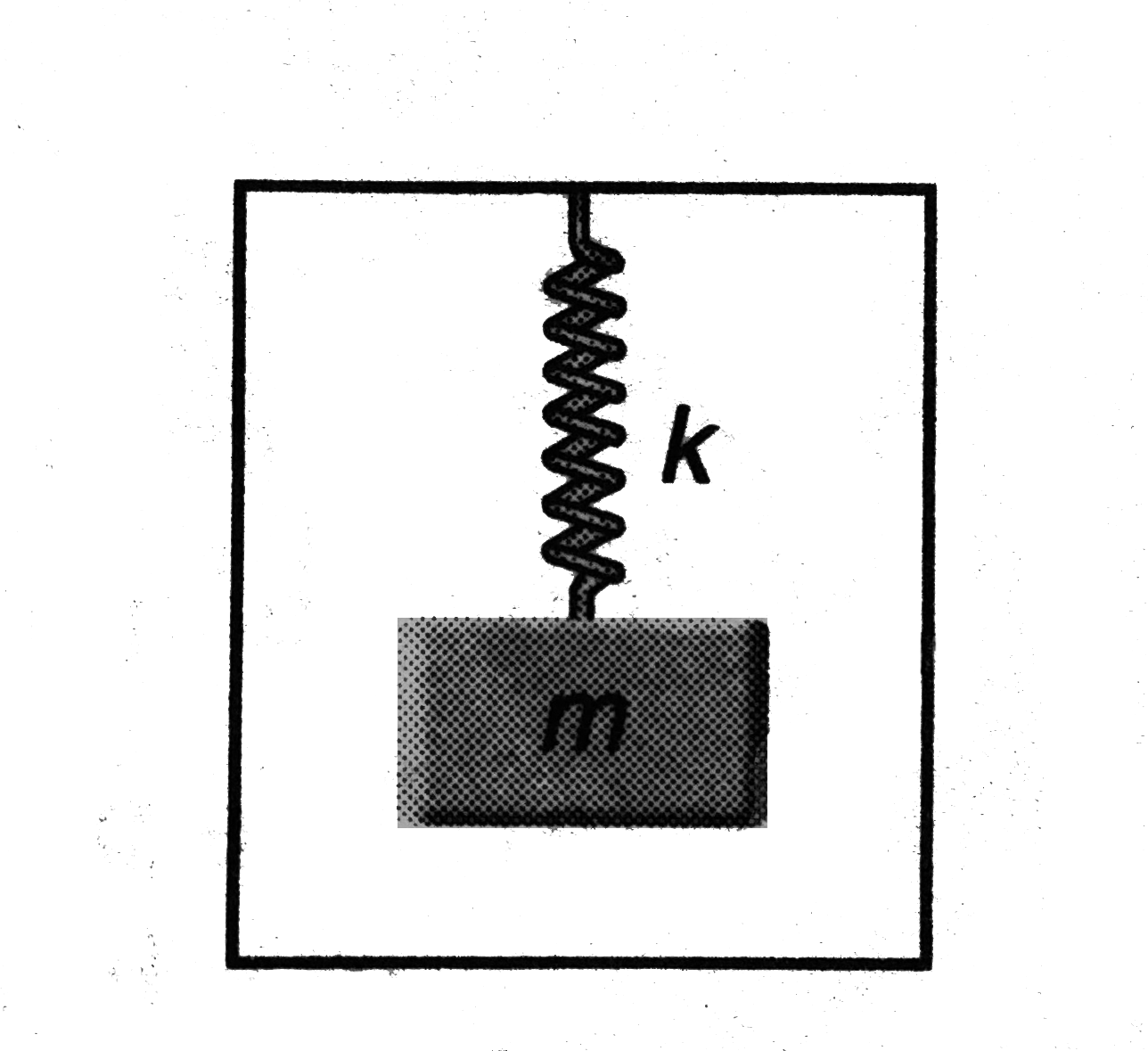
(a) the frequency and
(b) the amplitude of the resulting SHM.
View SolutionA body makes angular simple harmonic motion of amplitude `pi//10rad` and time period `0.05s`. If the body is at a displacement `theta = pi//10 rad` at `t = 0`, write the equation giving angular displacement as a function of time.
View SolutionA particle executes simple harmonic motion of period `16 s`. Two seconds later after it passes through the center of oscillation its velocity is found to be `2 m//s`. Find the amplitude.
View SolutionA simple pendulum consists of a small sphere of mass `m` suspended by a thread of length `l`. the sphere carries a positive charge `q`. The pendulum is placed in a uniform electric field of strength `E` directed vertically upwards. With what period will the pendulum oscillate if the electrostatic force acting on the sphere is less than the gravitational force?
View SolutionFind the period of oscillation of a pendulum of length `l` if its point of suspension is
(a) moving vertically up with acceleration `a`
(b) moving vertically down with acceleration `a(lt g)`
(c) failing freely under gravity
moving horizontal with acceleration `a`.
View SolutionA block with mass `M` attached to a horizontal spring with force constant `k` is moving with simple harmonic motion having amplitude `A_(1)`. At the instant when the block passes through its equilibrium position a lump of putty with mass `m` is dropped vertically on the block from a very small height and sticks to it.
(a) Find the new amplitude and period.
(b) Repeat part (a) for the case in which the putty is dropped on the block when it is at one end of its path.
View SolutionA bullet of mass `m` strikes a block of mass `M`. The bullet remains embedded in the block. Find the amplitude of the resulting SHM.

View SolutionAn annular ring of internal and outer radii `r` and `R` respectively oscillates in a vertical plane about a horizontal axis perpendicular to its plane and passing through a point on its outer edge. Calculate its time period and show that the length of an equivalent simple pendulum is `(3R)/(2)` as `r rarr 0` and `2 R` as `r rarr R`.
View SolutionA body of mass `200 g` oscillates about a horizontal axis at a distance of `20 cm` from its centre of gravity . If the length of the equivalent simple pendulum is `35cm`, find its moment of inertia about the point of suspension.
View SolutionShow that the period of oscillation of simple pendulum at depth `h` below earth's surface is inversely proportional to `sqrt(R - h)` , where `R` is the radius of earth. Find out the time period of a second pendulum at a depth `R//2` from the earth's surface ?
View SolutionThe period of a particle in SHM is `8 s`. At `t = 0` it is in its equilibrium position.
(a) Compare the distance travelled in the first `4s` and the second `4s`.
(b) Compare the distance travelled in the first `2s` and the second `2s`.
View Solution(a) The motion of the particle in simple harmonic motion is given by `x = a sin omega t`. If its speed is `u`, when the displacement is `x_(1)` and speed is `v`, when the displacement is `x_(2)`, show that the amplitude of the motion is
`A = [(v^(2)x_(1)^(2) - u^(2)x_(2)^(2))/(v^(2) - u^(2))]^(1//2)`
(b) A particle is moving with simple harmonic motion is a straight line. When the distance of the particle from the equilibrium position has the values ` x_(1)` and `x_(2)` the corresponding values of velocity are `u_(1)` and `u_(2)`, show that the period is
`T = 2pi[(x_(2)^(2) - x_(1)^(2))/(u_(1)^(2) - u_(2)^(2))]^(1//2)`
View SolutionShow that the combined spring energy and gravitational energy for a mass `m` hanging from a light spring of force constant `k` can be expressed as `U_(0) + (1)/(2) ky^(2)`, where `y` is the distance above or below the equilibrium position and `U_(0)` is constant.
View SolutionThe masses in figure slide on a frictionless table. `m_(1)` but not `m_(2)`, is fastened to the spring. If now `m_(1)` and `m_(2)` are pushed to the left , so that the spring is compressed a distance `d`, what will be the amplitude of the oscillation of `m_(1)` after the spring system is released ?

View SolutionThe spring shown in figure is unstretched when a man starts pulling on the cord. The mass of the block is `M`. If the man exerts a constant force `F`, find

(a) the amplitude and the time period of the motion of the block,
(b) the energy stored in the spring when the block passes through the equilibrium position and
(c) the kinetic energy of the block at this position.
View SolutionIn figure, `k = 100 N//m, M = 1kg` and `F = 10 N`
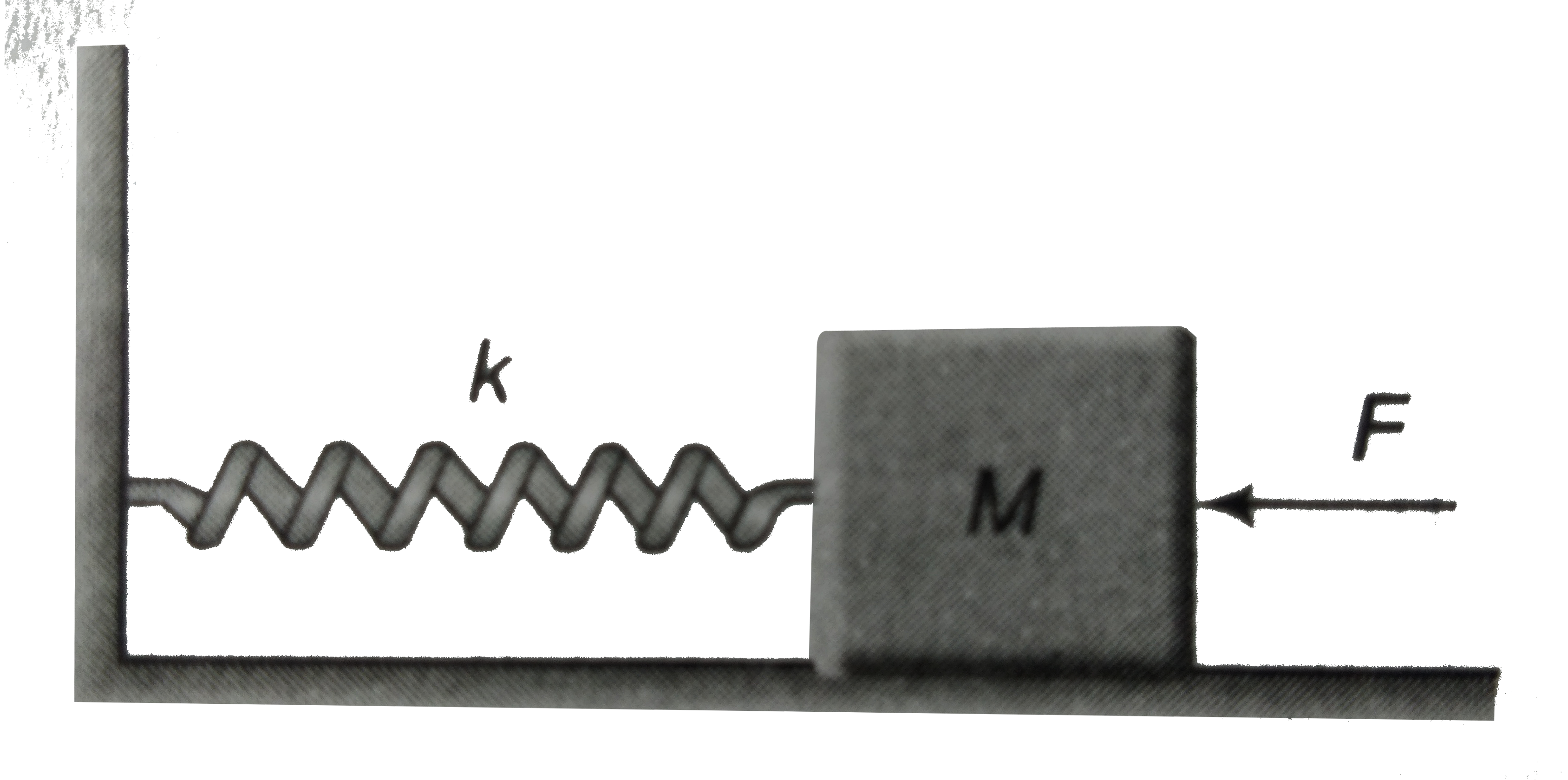
(a) Find the compression of the spring in the equilibrium position
(b) A sharp blow by some external agent imparts a speed of `2 m//s` to the block towards left. Find the sum of the potential energy of the spring and the kinetic energy of the block at this instant.
(c) Find the time period of the resulting simple harmonic motion.
(d) Find the amplitude.
(e) Write the potential energy of the spring when the block is at the left estreme.
(f) Write the potential energy of the spring when the block is at the right extreme.
The answers of (b), (e) and (f) are different. Explain why this does not violate the principle of conservation of energy ?
View SolutionPendulum `A` is a physical pendulum made from a thin, rigid and uniform rod whose length is `d`. One end of this rod is attached to the ceiling by a frictionless hinge, so that the rod is free to swing back and forth. Pendulum `B` is a simple pendulum whose length is also `d`. Obtain the ratio `(T_(A))/(T_(B))` of their periods for small angle oscillations.
View SolutionA solid cylinder of mass `m` is attached to a horizontal spring with force constant `k`. The cylinder can roll without slipping along the horizontal plane. (See the accompanying figure.) Show that the center of mass of the cylinder executes simple harmonic motion with a period `T = 2pisqrt((3m)/(2k))`, if displaced from mean position.
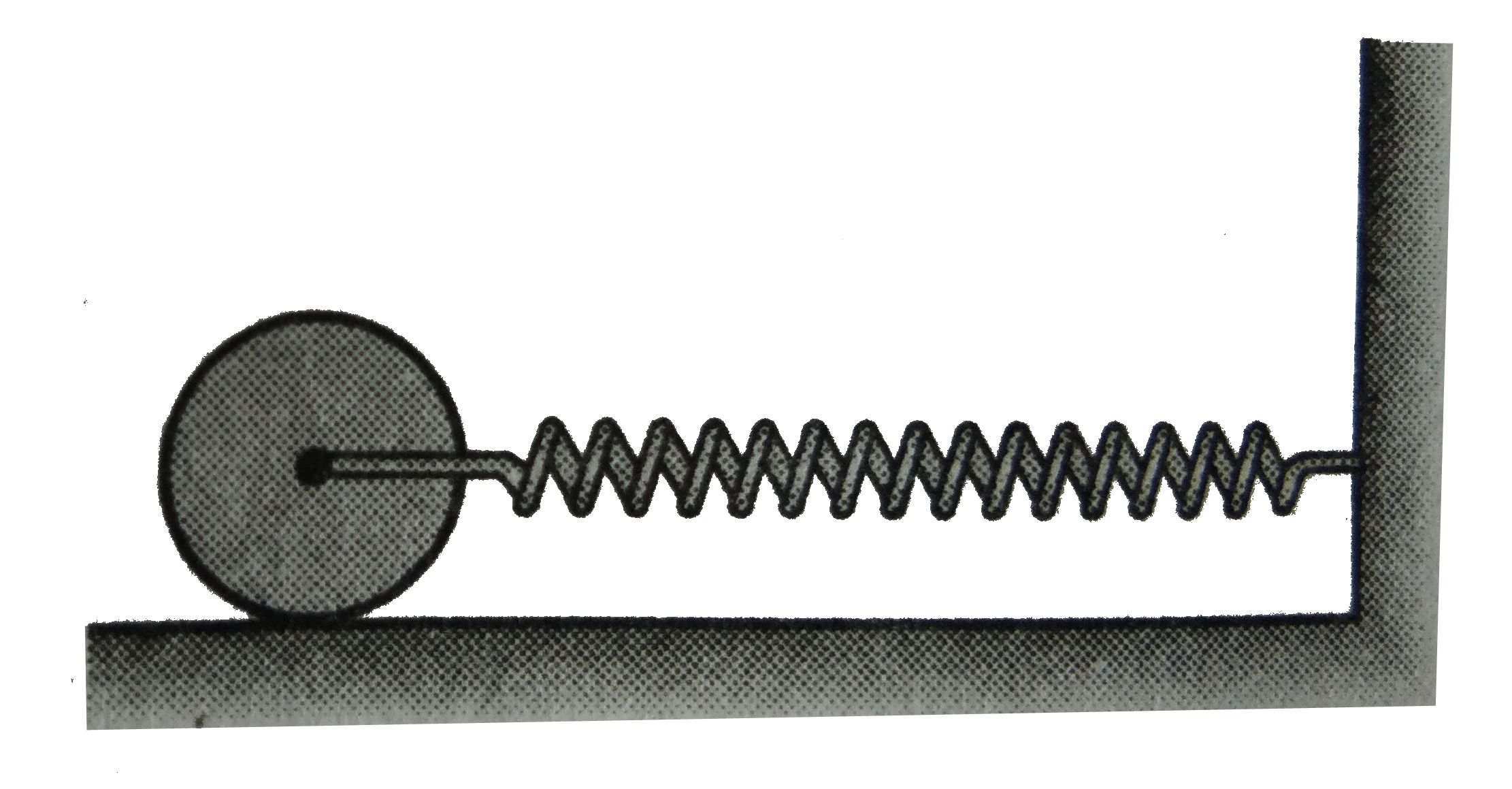
View SolutionA cord is attached between a 0.50 kg block and a string with force constant `k=20 N//m`.The other end of the spring is attrached to the wall and the cord is placed over a pulley `(I=0.60 MR^2)` of mass 5.0 kg and radius 0.50 m.(See the accompanying figure.) Assuming no slipping occurs what is the frequency of the oscillations when the body is set into motion ?

View SolutionTwo linear SHM of equal amplitudes `A` and frequencies `omega` and `2omega` are impressed on a particle along `x` and `y - axes` respectively. If the initial phase difference between them is `pi//2`. Find the resultant path followed by the particle.
View SolutionA particle is subjected to two simple harmonic motions given by
`x_(1) = 2.0sin (100 pi t)` and `x_(2) = 2.0sin (120pi t + pi //3)`
where, `x` is in `cm` and `t` in second. Find the displacement of the particle at
(a) `t = 0.0125`,
(b) `t = 0.025`.
View Solution
Level 1 Subjective questions and complete solutions for chapter SIMPLE HARMONIC MOTION of DC PANDEY ENGLISH of Class 11
All Exercises from DC PANDEY Class 11 PHYSICS SIMPLE HARMONIC MOTION
- Comprehension types
- Example Type 1
- Example Type 10
- Example Type 11
- Example Type 12
- Example Type 13
- Example Type 2
- Example Type 3
- Example Type 4
- Example Type 5
- Example Type 6
- Example Type 7
- Example Type 8
- Example Type 9
- Examples
- Exercise 14.1
- Exercise 14.2
- Exercise 14.3
- Exercise 14.4
- Integer type questions
- Intro. Exer.
- JEE Advanced
- Level 1 Assertion And Reason
- Level 1 Single Correct
- Level 1 Subjective
- Level 2 Comprehension
- Level 2 More Than One Correct
- Level 2 Single Correct
- Level 2 Subjective
- Matrix matching type questions
- Miscellaneous Examples
- More than one option is correct
- Only one question is correct